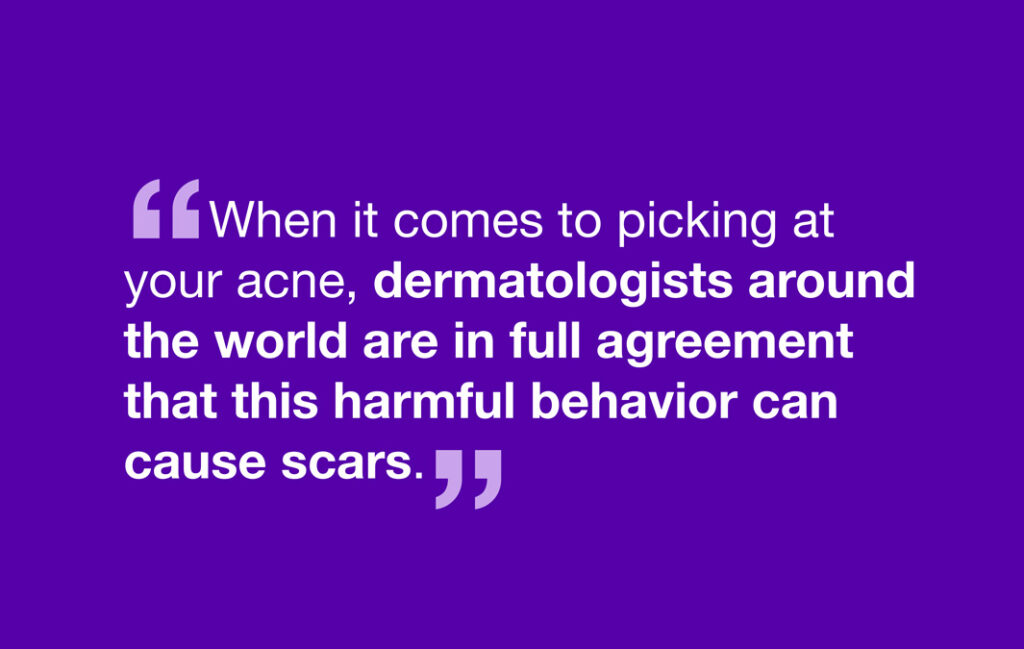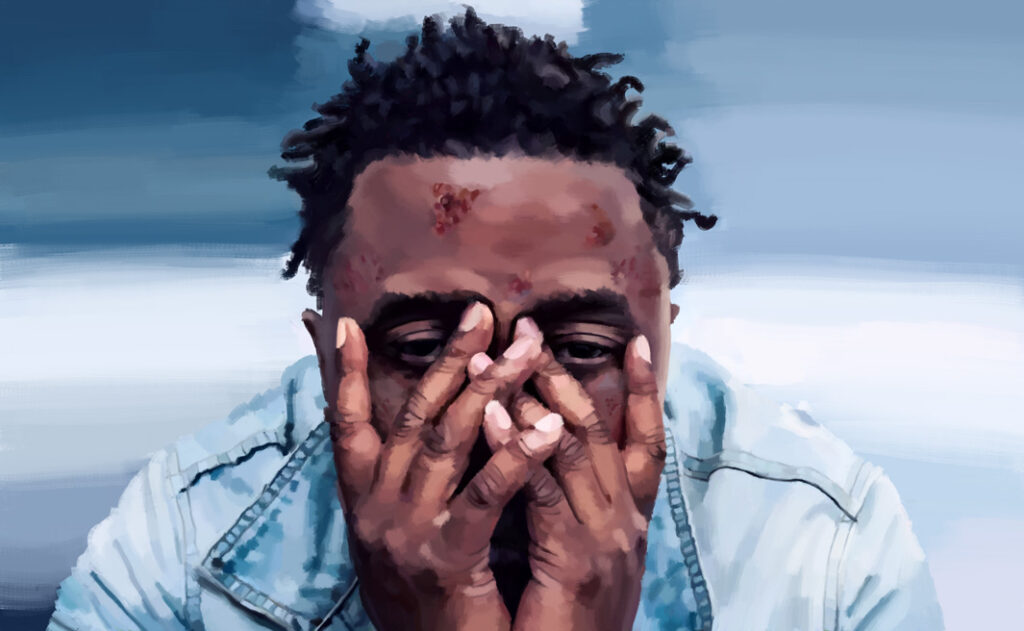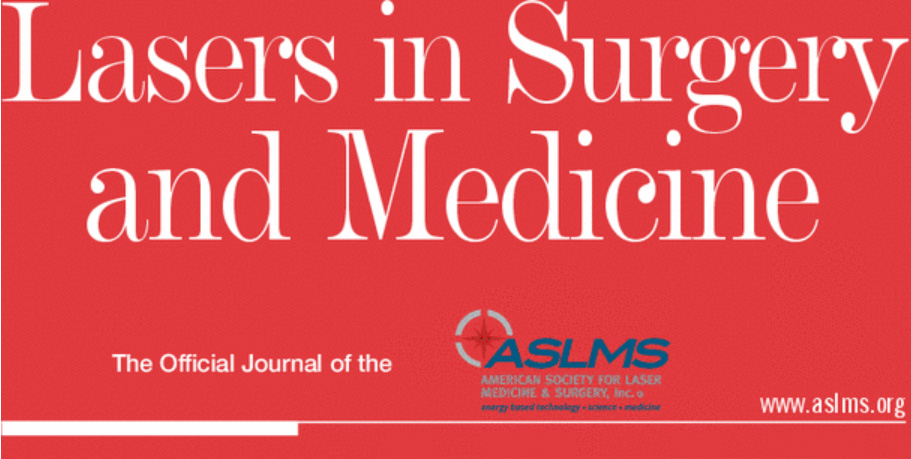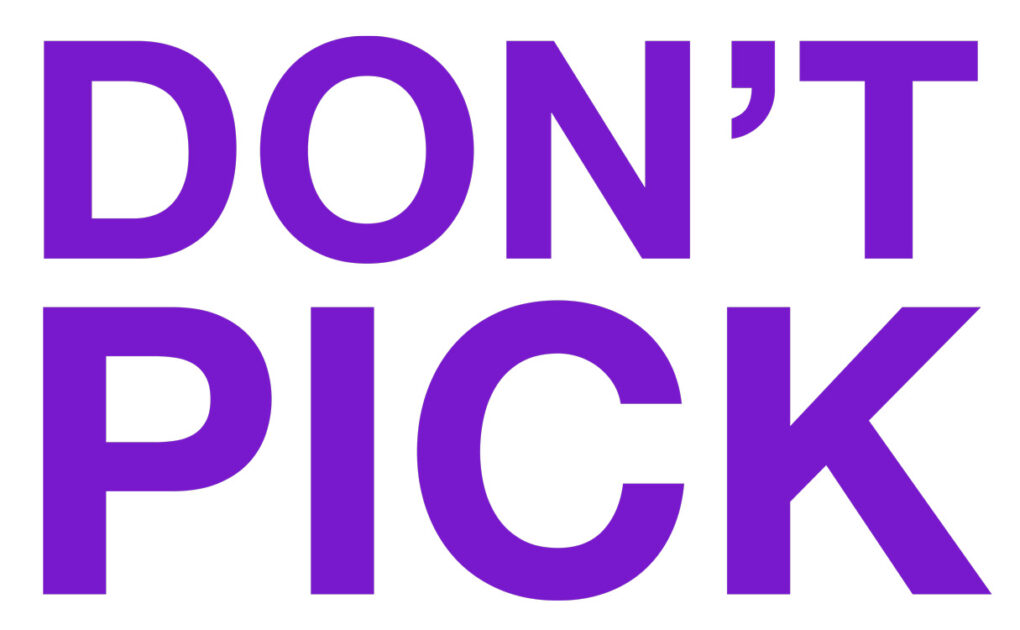Picking at Your Skin Is Is One of the Worst Things You Can Do When It Comes to Scarring. Seek Help If You Feel the Urge to Pick Compulsively.

The Essential Info
Dermatologists around the world are unanimous that picking at acne lesions is a harmful behavior that can lead to scars.
This is because picking at the skin irritates it, causing more inflammation. Research shows that prolonged inflammation is a key reason why acne lesions end up leaving scars.
If you find the urge to pick at your skin difficult to resist, you may have a psychological condition called excoriation disorder. If so, a psychologist or counselor can help you break this harmful habit.

The Science
- What Dermatologists Have to Say about Skin Picking
- How Do You Stop Picking at Your Skin?
- Excoriation Disorder: A Special Case of Skin Picking
- Healing of Acne Lesions and Scar Formation
- Why Picking Increases the Chances of Scarring

Most people with acne are tempted to pick at their lesions from time to time. While popping a pimple with a white or yellow center can be safe if done properly, picking at acne lesions is a big no-no. This is because picking at lesions increases the chances of scarring, turning a temporary lesion into a permanent mark on the skin.
When it comes to picking at your acne, dermatologists around the world are in full agreement that this harmful behavior can cause scars. Here is what they have to say about it:
What Dermatologists Have to Say about Skin Picking
“Avoid picking…pimples, as this can cause scarring.”1 – American Academy of Dermatology, an organization representing over 20,500 dermatologists
“The acne may become secondarily infected and picking it may also cause scarring.”2 – DermNet, a dermatology website launched by the New Zealand Dermatological Society
“Chronic or self-injurious skin picking may lead to tissue damage, scarring, and infection.”3 – A 2006 article in the Journal of Applied Behavior Analysis
“The incidence of acne scarring may be increased…with manipulation or ‘picking’ by the patient. These scars may be aesthetically unappealing, and if hypertrophic, they may be painful as well.”4 – A 2015 article in the Journal of Clinical and Aesthetic Dermatology
“[S]carring…may also be the product of…the squeezing or picking of lesions with the fingernails.”5 – A 2016 article in the Cochrane Database of Systematic Reviews
So How Do You Stop Picking at Your Skin?

Now that you know that picking at the skin can trigger scarring, make the decision to stop picking today, and stick to it. Remember that even if you do not tend to scar easily, irritating your skin by picking at it still puts you at risk for scars.6
Excoriation Disorder: A Special Case of Skin Picking
For a small number of people, picking may have become a compulsive behavior that happens almost automatically. This is called excoriation (skin picking) disorder and often affects individuals with obsessive compulsive disorder (OCD), particularly females. Besides making any existing acne worse, excoriation disorder can even cause a type of acne called acne excoriée.4,7-12
In such cases, following the advice to “just stop it” is easier said than done. Research shows that counseling, which may include cognitive behavioral therapy, can help train yourself out of picking at your skin.9,10 One study found that internet-based support groups can also help.10
To understand why picking can trigger scarring, we need to take a look at how acne lesions heal and how this process can go wrong.
Healing of Acne Lesions and Scar Formation
Biologically speaking, an acne lesion is a small wound. Like other wounds, an acne lesion heals in three phases, as long as we do not interfere with it by picking at the skin:
- Inflammation: The goal of this stage is to recruit special cells that will clean up the damaged skin at the wound site and start rebuilding the skin. This is accompanied by the classic signs of inflammation, such as redness, swelling, and soreness. Research suggests that when the inflammatory response is weak, the body needs to prolong this phase, and this prolonged inflammation makes a scar more likely.13
- Proliferation: The goal of this stage is to start filling in the wound with new skin cells and collagen, the protein that makes the skin firm and stretchy.
- Remodeling: The goal of this stage is to replace the temporary skin tissue formed in Phase 3 with permanent skin tissue. This involves breaking down the immature collagen produced in Phase 3 with a mature form of collagen.14,15 An acne scar results when the wound is filled with either too little or too much collagen in Stages 2 and 3.16,17
Expand to learn more about the healing process

Because scarring is so common, scientists are constantly investigating the healing process in hopes of learning how scars might be prevented.
In a study published in 2015 in the journal Lasers in Surgery and Medicine, researchers zoomed in on a patient’s skin while an acne lesion was healing. They used a technique that allowed them to observe tiny blood vessels in the skin over 51 days while the lesion went through the 4 phases of healing.
The scientists saw that in the early stages of healing, inflammation triggered the formation of many tiny blood vessels around the acne lesion. These tiny blood vessels were needed for bringing repair cells to the lesion site and for removing pieces of damaged tissue. Then, the number of blood vessels gradually decreased as the skin remodeled itself.12
This study underscores that the healing of an acne lesion is a highly coordinated, complex process that takes nearly 2 months to complete.
Ideally, the healing process should result in perfectly smooth skin that looks just the same as it did before the acne lesion appeared. In reality, perfect, scarless healing is rare in teens and adults.18 When we pick at lesions, we make it even more likely that scars will remain.
Why Picking Increases the Chances of Scarring
Picking at acne disrupts the healing process. While it is very difficult for scientists to set up a controlled experiment to prove this, everything we know about acne tells us that picking will physically irritate the skin.
Physical irritation is proven to trigger inflammation, and as we have seen, prolonged inflammation makes a scar more likely to form. In addition, physical irritation can make acne flare up even more, and the more severe your breakouts are, the more likely they are to leave scars. In short, the best thing you can do for your acne is to stop picking immediately.
Types of Acne Scars
The type of acne scar you end up with depends on whether the healing process deposits too little or too much collagen at the wound location. The two main types of acne scars are:
- Indented (atrophic) scars: These scars contain less collagen than the skin around them, making them look sunken-in. Indented scars are the most common type of acne scars. The three subtypes of indented scars are icepick scars, boxcar scars, and rolling scars.
- Raised (hypertrophic or keloid) scars: These scars contain more collagen than the skin around them and are therefore raised above the skin surface. Hypertrophic scars are raised scars that do not grow past the edges of the original lesion. Keloid scars, which are less common, may extend beyond the original lesion and can even keep expanding over time.16,17
References
- American Academy of Dermatology Association. Skin care tips dermatologists use. Available at: https://www.aad.org/public/everyday-care/skin-care-basics/care/skin-care-tips-dermatologists-use
- Acne excorie. Available at: https://dermnetnz.org/topics/acne-excorie/
- Lane, K. L., Thompson, A., Reske, C. L. & Gable, L. M. 7 Barton-Arwood, S. Reducing skin picking via competing activities. J Appl Behav Anal. 39, 459-62 (2006). https://pubmed.ncbi.nlm.nih.gov/17236345/
- Werschler, W., Herdener, R.S., Ross, E.V. & Zimmerman, E. Treating acne scars: What’s new?: Consensus from the experts. Journal of Clinical and Aesthetic Dermatology. 8, S1-S8 (2015). https://www.ncbi.nlm.nih.gov/pmc/articles/PMC4570086/
- Abdel Hay, R., Shalaby, K., Zaher, H., Hafez, V., Chi, C. C., Dimitri, S., Nabhan, A. F. & Layton, A. M. Interventions for acne scars. Cochrane Database Syst Rev. 4, CD011946 (2016). https://pubmed.ncbi.nlm.nih.gov/27038134/
- He, L. et al. Two new susceptibility loci 1q24.2 and 11p11.2 confer risk to severe acne. Nat Commun 5, 2870 (2014). https://www.ncbi.nlm.nih.gov/pubmed/24399259
- Kim, D. I., Garrison, R. C. & Thompson, G. A near fatal case of pathological skin picking. Am J Case Rep. 14, 284-7 (2013). https://pubmed.ncbi.nlm.nih.gov/23919102/
- Nirmal, B., Shenoi, S. D., Rai, S., Sreejayan, K. & Savitha S. ‘Look beyond skin’: psychogenic excoriation – a series of five cases. Indian J Dermatol. 58, 246 (2013). https://pubmed.ncbi.nlm.nih.gov/23723517/
- Lochner, C., Roos, A. & Stein, D. J. Excoriation (skin-picking) disorder: a systematic review of treatment options. Neuropsychiatr Dis Treat. 13, 1867-1872 (2017). https://pubmed.ncbi.nlm.nih.gov/28761349/
- Gallinat, C., Moessner, M., Haenssle, H. A., Winkler, J. K., Backenstrass, M. & Bauer S. An internet-based self-help intervention for skin picking (SaveMySkin): Pilot randomized controlled trial. J Med Internet Res. 21, e15011 (2019). https://pubmed.ncbi.nlm.nih.gov/31586368/
- Gupta, M. A., Gupta, A. K. & Schork, N. J. Psychosomatic study of self-excoriative behavior among male acne patients: preliminary observations. Int J Dermatol. 33, 846-8 (1994). https://pubmed.ncbi.nlm.nih.gov/7883406/
- Jafferany, M. Psychodermatology: a guide to understanding common psychocutaneous disorders. Prim Care Companion J Clin Psychiatry. 9, 203-13 (2007). https://pubmed.ncbi.nlm.nih.gov/17632653/
- Holland, D. B., Jeremy, A. H., Roberts, S. G., Seukeran, D. C., Layton, A. M. & Cunliffe, W. J. Inflammation in acne scarring: a comparison of the responses in lesions from patients prone and not prone to scar. Br J Dermatol. 150, 72-81 (2004). https://pubmed.ncbi.nlm.nih.gov/14746619/
- Guo, S. & Dipietro, L. A. Factors affecting wound healing. J Dent Res. 89, 219-29 (2010). https://pubmed.ncbi.nlm.nih.gov/20139336/
- Ozgok Kangal, M. K. & Regan, J. P. Wound Healing. [Updated 2020 Jul 10]. In: StatPearls [Internet]. Treasure Island (FL): StatPearls Publishing; 2020 Jan-. Available from: https://www.ncbi.nlm.nih.gov/books/NBK535406/
- Fox, L., Csongradi, C., Aucamp, M., du Plessis, J. & Gerber, M. Treatment modalities for acne. Molecules. 21, 1063 (2016). https://pubmed.ncbi.nlm.nih.gov/27529209/
- Connolly, D., Vu, H. L., Mariwalla, K. & Saedi, N. Acne scarring – pathogenesis, evaluation, and treatment options. J Clin Aesthet Dermatol. 10, 12-23 (2017). https://pubmed.ncbi.nlm.nih.gov/29344322/
- Marshall, C, D., Hu, M. S., Leavitt, T., Barnes, L. A., Lorenz, H. P. & Longaker, M. T. Cutaneous scarring: Basic science, current treatments, and future directions. Adv Wound Care (New Rochelle). 7, 29-45 (2018). https://pubmed.ncbi.nlm.nih.gov/29392092/
- Baran, U., Li, Y., Choi, W. J., Kalkan, G. & Wang, R. K. High resolution imaging of acne lesion development and scarring in human facial skin using OCT-based microangiography. Lasers Surg Med. 47, 231-8. (2015). https://pubmed.ncbi.nlm.nih.gov/25740313/
- American Academy of Dermatology. Available at: https://en.wikipedia.org/wiki/American_Academy_of_Dermatology
- DermNet NZ. Available at: https://en.wikipedia.org/wiki/DermNet_NZ
 Acne.org Products
Acne.org Products